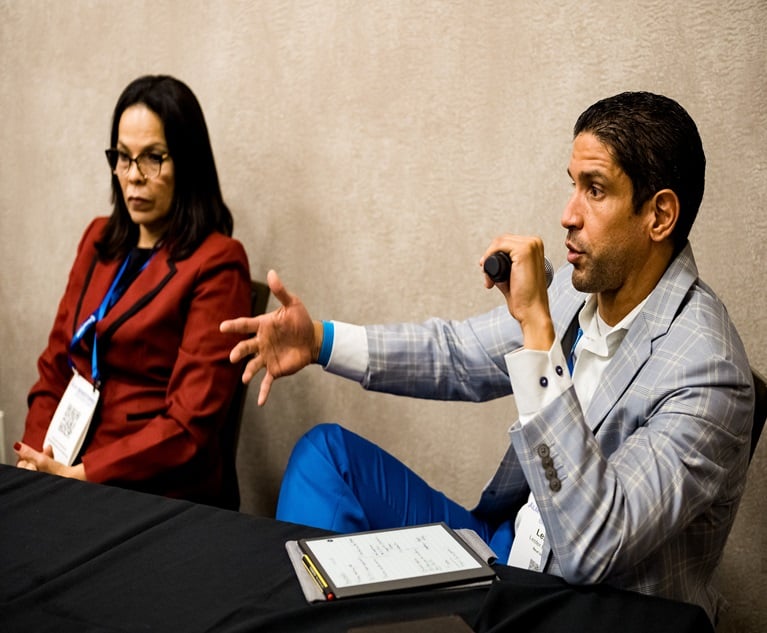I'll bet that some of you have a stack of business cards in asnarl of rubber bands on your desk. It's right next to that pile ofspare change and the cell phone charger that doesn't match yourcurrent device.
|Those business cards are a constant reminder of all thefollowing up you're not doing, but would be doing, could be doing,should be doing.
|Follow up is so important. That's why I write about it often. (Iguess that's my way of following up.)
|Not following up with connections you make and the people youmeet is kind of like not connecting with or meeting them atall.
|[Related: 4 ways to increase online leadconversions]
|Following through is just as important as following up.Following through (the act of continuing a plan, project, scheme,or the like to its completion) is an important part of following up(to maintain contact with someone so as to monitor the effects ofearlier activities).
|If you don't follow through, no one will ever follow up withyou. Naturally, they'll be less inclined to follow up with you ifyou haven't followed up with them, in which case there's verylittle follow through.
|Then there's following someone on Twitter. Or Instagram. Or atthe mall—which might be considered stalking. Best just to followup.
|Follow that?
|Here's when & how to follow up afternetworking
|If you're still with me, here's when and how to follow up afternetworking at your next event.
|If you meet someone at an event and they tell you they'reinterested in becoming a client, you should definitely follow up.But you already knew that. Of course, if you can become theirclient, get in touch with them. But again, you knew that too!
|If you meet someone you like and can help them, you shouldfollow up—or invite them to do so.
|If you meet someone you like and they can help you; yes, youshould follow up.
|The best scenario is if you can help one another. Even better ifyou can refer each other business. Or job opportunities. Orrecruits to be hired.
|If none of these scenarios apply, then there's no reason tofollow up or follow through. You don't have to stay in touch witheveryone you meet. How many of those business cards on your desk doyou really need to keep?
|Reconnecting with someone can be a face-to-face meeting (best),a Skype call (still face-to-face, but not as good) or a phonemeeting. Whatever makes the most sense.
|Here are some best practices that might help you follow throughon your follow-up.
||
(Photo: Shutterstock.com)
|1. Start in the presentation phase.
|There are four phases to networking—(1) Preparation; (2)Presentation; (3) Follow Up; and (4) Maintenance. Preparation isdoing your homework before an event or meeting. Presentation isintroducing yourself (or getting yourself introduced) to others;having great conversations, offering the infamous elevator speechand exchanging business cards. The follow-up starts there, in thePresentation phase, with you saying something like, “Does it makesense for us to exchange cards and I promise to follow up with youto explore ways to refer each other business?” Now when you followthrough with an email, phone call, or text (no, really!), you'vealready established yourself as reliable and serious. You will getthat email, phone call or text returned.
||
(Photo: Shutterstock.com)
|2. Reconnect the next day.
|It's a great practice to follow up in 24 hours or the nextbusiness day. (I'm typically a phone guy. I think there's an appfor that.) “Hello Sam! This is Michael Goldberg! We met yesterdayat the Wholesaler Marketing Meeting. We discussed reconnecting toexplore ways of helping one another and I'm doing that. At yourconvenience, please give me a call back at [this number]. I lookforward to the prospect of reconnecting!” That's my voicemailmessage. Of course, I would write a more poetic version as anemail. These outbound messages almost always get returned the sameday. “Thank you for your prompt follow up call. You beat me to thepunch!”
||
(Photo: Evan Lorne / Shutterstock.com)
3. Use LinkedIn.
|Another effective way of continuing a dialogue is throughLinkedIn. Through an invite, you can simply write a quick personalnote “”nviting” the person you met to connect. And yes, always makeit a personal note. It takes 10 seconds. “Hello Sam! Great meetingyou last night at the WMM. Let”s connect and better prepareourselves for a follow up conversation. — MG” After connecting anddoing some legwork, you might be able to help each other by sharingvaluable personal connections.
|(Photo: Shutterstock.com)
|4. Know the place of WE.
|In some cases, you might be able to help the other person waymore than they can help you. Sometimes, the reverse is true.Recognize and embrace that dynamic. Always remember thatrelationships (good ones, anyway) are a two-way street, so it'sbest to let those that are in a better position to help you knowyou appreciate them and that you're willing to do whatever you canto help them right back. It's not about keeping score—and if itever comes to that, the relationship might lose steam.
|5. Be specific.
|The more specific you are, the more others can help you. There'sa big difference in being referred to “Anyone that needs myservices” or to “manufacturing companies like ABC Manufacturing.”People in networking circles almost always want to help. By beingspecific about who you are, what you do and who you want to meet,you're allowing people to get to know you and help.
|(Photo: Shutterstock.com)
|6. Stay in touch.
|Following up is not a “one and done” deal. If you're good, it'sabout staying in touch, developing fun relationships and expandingyour network. Having a system in place to stay in touch with your“best in network” (BIN—I just made that up) will absolutely putfood on the table. Simply establish a system to speak regularlywith your BIN. Scheduling monthly or quarterly calls work well forme. Maybe regular lunch or dinner “dates” works better for you.
|The key to all of these approaches is for you to take theinitiative. Don't ever wait for the other person to make the firstmove. Of course, if they do, all the better! The end result shouldbe more business, better relationships and more room on your deskfor spare change.
Want to continue reading?
Become a Free PropertyCasualty360 Digital Reader
Your access to unlimited PropertyCasualty360 content isn’t changing.
Once you are an ALM digital member, you’ll receive:
- All PropertyCasualty360.com news coverage, best practices, and in-depth analysis.
- Educational webcasts, resources from industry leaders, and informative newsletters.
- Other award-winning websites including BenefitsPRO.com and ThinkAdvisor.com.
Already have an account? Sign In
© 2024 ALM Global, LLC, All Rights Reserved. Request academic re-use from www.copyright.com. All other uses, submit a request to [email protected]. For more information visit Asset & Logo Licensing.










